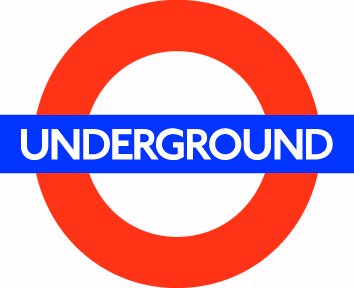
Being a dramturg is in part a really great excuse to buy lots of books without guilt. It also means trying to incorporate and synthesize a whole lot of information in ways that will be meaningful to your fellow artists or an audience. Sometimes this means you let go of some bit of information you love because it isn't useful and sometimes it means you smack your head when you missed something you should have already found.
Last night for example, I got a little book shaped package in the mail that was, in fact, a book, What's in a Name: The origin of the names of all the stations in current use on the London Underground and the Docklands Light Rail with their opening dates. So the title is a bit of a mouthful but the book is full of useful information from Mr. Cyril M. Harris and the London Transport Museum. In it I found some information on Islington that I had entirely missed in the last post and in the OED. (I have gone back and added it now.) However, that is part of any good artistic process (particularly when collaboration is involved) being willing to find something you have missed or let a cherished idea that isn't working go away.
So that confession out of the way, I wanted to give some of the splendid information (from this splendid little book) about some of the stations mentioned in Neverwhere (not all of them of course since this book only covers open stations.)
Angel Islington
Angel station takes its name from the Angel coaching in and dates to at least 1638. The station opened in 1901. Islington comes from either of a couple of Anglo-Saxon words Gislandune meaning Gisel "hostage" and dun "hill" or Isendone which is from isel "lower" and don "a fortified enclosure" so Angel Islingdon would of course be that fortified low place where you might keep an angel hostage.
Blackfriars
Blackfriars refers to the black robes worn by the Dominican monks who had lived in a monastery founded by the Earl of Kent in the 13th Century. The monastery was dissolved (such a delicate way of putting it) by Henry VIII in 1538 but reemerged as a Blackfriars Theatre but was pulled down in 1665. The station opened in 1870.
Blackfriars
Blackfriars refers to the black robes worn by the Dominican monks who had lived in a monastery founded by the Earl of Kent in the 13th Century. The monastery was dissolved (such a delicate way of putting it) by Henry VIII in 1538 but reemerged as a Blackfriars Theatre but was pulled down in 1665. The station opened in 1870.
Earl's Court
After the Norman Conquest the De Vere family was given a manor which also had a court when a later head of the family was made the Earl of Oxford it became Earl's court. The court building was torn down in 1886. The station opened in 1871 but burned in 1875 then was rebuilt and opened again in 1878.
Hammersmith
The origins of Hammersmith or Hammersmyth are some what obscure. The most likely come from the Anglo-Saxon hamor "hammer" and smydde "a smithy" referring to a blacksmith who once lived there. An alternate suggestion is from the Anglo Saxon ham "town" or "home" and hythe "port" The first option seems most likely for Neverwhere given that we meet Hammersmith and he is a smith but there is something of a home port about him for Door as well. The current station opened in 1874 but an earlier one was opened in 1864.
Knightsbridge
Knightsbridge shows up in 1046 as Cnihtebricge meaning "the bridge of young men" but in 1364 it was recorded as Knyghtessbrugg a somewhat dubious suggestion was that knights had jousting tournaments there. There was a bridge however but the stream it crossed is now buried and like many of London's rivers now part of the sewage system. The station opened in 1906
Marble Arch
If the story has the oath "Temple and Arch" I figure I should include the Marble Arch and Temple stations. The Marble Arch was designed by John Nash after the Arch of Constantine in Rome and is made of Italian Marble from Carrara. When it was first raised in 1828 it stood in front of Buckingham palace. It was moved to Hyde Park in 1850-1851. The station opened in 1900.
Seven Sisters
The name referred to the seven elm trees which stood in a circle near Page Green, which may have stood for pagan's green. The station opened in 1986.
Shepherd's Bush
The name may have referred to shepherds who used the green for their sheep or it may have referred to someone named Sheppard as it appeared as Sheppard's Bush Green in 1635. The station was moved and reopened in 1914. (Of course you don't want to meet the Shepherd's here.)
Temple
The land was owned by the religious/military order the Knights Templar in 1118. They derive their name from Solomon's Temple in Jerusalem where they had quarters during the crusades. The Pope dissolved the order in 1312 and the buildings in London started being used for law courts and lawyers in the 14th century. The station opened in 1870.
After all that history the Herman Melville quote popped into my head, "It is not down in any map; true places never are." That may be the biggest problem in trying to chart a course through imaginary places. I just hope to get to the true place eventually.
No comments:
Post a Comment
Got something to suggest or a comment? Please do!